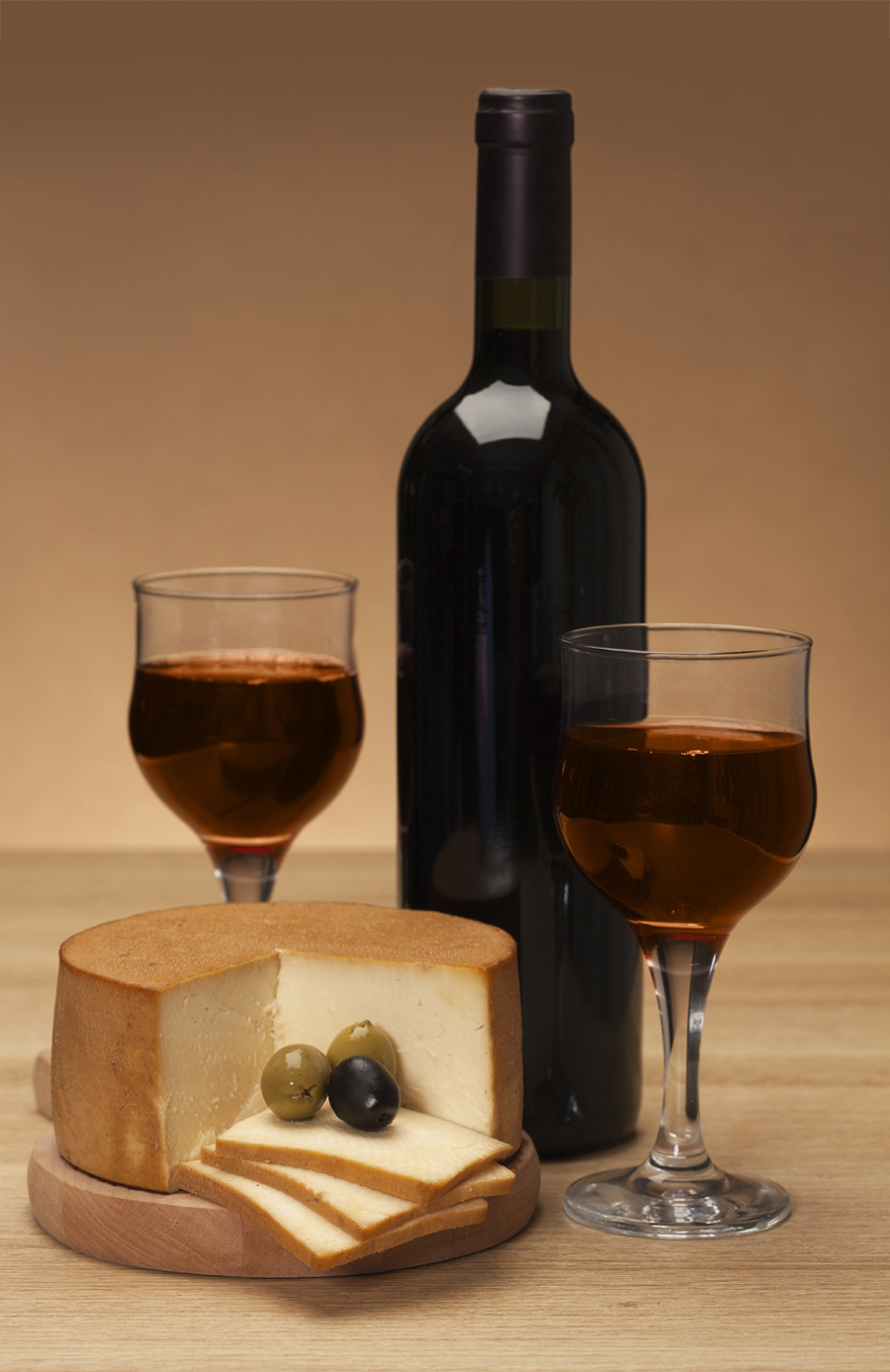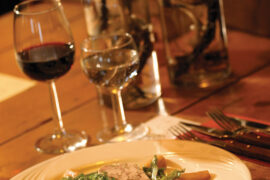By Matthew DeBord
HQ 77 | SPRING 2012
If you were a fan of the long-running TV series Frasier – or even continue to watch episodes of the sitcom in syndication – then you’ve been exposed to the Crane brothers’ devotion to Sherry. After a hard day of call-in radio show hosting and grueling psychiatric caretaking (both brothers are shrinks, but only Niles continues to practice), the gents like to unwind with tiny glasses of this beverage.
So what is Sherry – besides TV writer shorthand for “pretentious quaff of overeducated Seattle toffs?”
Well, it’s part of a family of what’s known as “fortified” wines. These are wines that at a point in their production process have a neutral, distilled spirit added to them. Sherry and Port are probably the two most famous. And not too coincidentally, they both hail from the Iberian Peninsula: Sherry from Spain and Port from Portugal.
Sherry has over the years attained a reputation in the U.S. for being something of a haughty drink. It’s generally drunk as an aperitif – something to sip before dinner in place of a cocktail (or a beer). It’s not generally considered to be the manliest of drinks, which is perhaps why the Crane boys are associated with it. Frasier and Niles’ salt-of-the-earth dad would never touch the stuff.
But that’s too bad, because in Spain, Sherry enjoys a robust fandom that includes the manly, the unmanly and everyone else in between. Sherry is the natural accompaniment of tapas, the small plates of “snacks” served at small, cozy bars often visited by Spaniards on their way to very late dinners. (They routinely eat at 10 p.m.) Tapas come in a wide variety of flavors and styles; they can include meat, vegetables, cheese and olives. Sherry pairs nicely with the tasty hodgepodge, the variety of the diminutive smorgasbord.
And there isn’t just one type of Sherry. Frasier and Niles are probably drinking Sherry that is called “Fino” or “Manzanilla” – these are light, dry Sherries that are traditionally served with tapas and, in America, prior to sitting down to dinner and the more serious drinks, such as red wine.
But there are other types of Sherry. Amontillados are richer and darker than Finos and Manzanillas. Olorosos are darker still. oth montillados nd Olorosos are allowed to come into contact with air while aging, which darkens their color. Finos and Manzanillas are aged in such a way that air contact is avoided; this absence of oxidation preserves their pale color and light, crisp, dry nature.
Then there’s a unique category of sweet herry alled “Pedro Ximenez,” which is syrupy and mellow and usually consumed as an after-dinner drink, sort of like Port or Madeira.
All of these Sherries, because they’re fortified with spirit, have higher alcohol levels than regular still wines, usually between 17 and 20 percent. This of course means that you can’t chug Sherry. The Cranes have the right idea, which is to sip small amounts. Where the Crane model breaks down, however, is in keeping Sherry in a decanter. You don’t want to do that. In fact, when it comes to the lighter Sherries, once you open a bottle, you’re pretty much committed to finishing it off. Additionally, Sherry isn’t meant to be aged. You’re supposed to drink it right away. Luckily, you can buy the stuff in small bottles as well as larger ones.
What about cooking Sherry? Not for drinking – especially the cooking Sherry that is pre-salted for use in recipes.
And cream Sherry? In Spain, these are blended Sherries. In the U.S., they’re more of a branded beverage. My suggestion is to avoid them.

So what labels should you look for when shopping for Sherry? The best and most widely available quality brand from Spain that you can find in the U.S., both in stores and online, is Lustau. This Sherry house has been around since the late 19th century. It produces a full line of Sherries, from Fino right on up. Manzanillas and Finos will typically set you back around $17. And that’s a good place to start.
So should you delicately sip like Niles and Frasier? Sure, but remember that Sherry is actually meant to be drunk alongside food. You might not feel up to a spread of true Spanish tapas. But “tapas” just translates as “snacks,” so any small dishes will go nicely with Sherry. A couple of different types of nuts are a great idea; almonds in particular go well with dry Sherries, which often have a nutty aroma and flavor. I like to serve salted and unsalted, roasted and raw.
Next, you could add some meats. The Spanish love ham, but if you can’t find any ham from Spain, smoked American ham is excellent, as is Italian prosciutto.
Olives are a no-brainer. In fact, plain old green olives with the pimentos stuffed inside – you know, the classy Spanish olives that are plunked into Martinis – make for superb Sherry-mating tapas. I usually recommend that you don’t just dump them out of the jar, however. Instead, put them in a bowl (minus the brine from the jar), drizzle some good olive oil over them and add a bit of rosemary or oregano. This lets the olives marinate for a bit. You’ll be shocked at how much better they taste. I actually advocate doing this with all olives – the ones in the jars as well as the ones you buy from bulk retailers, which sell their olives out of big jugs and allow customers to choose how many they want to buy.
Finally, include some cheese. Spanish Manchego is a classic addition. It’s a sheep milk cheese that’s firm but not hard, like Parmesan. Its nutty flavors go very well with Sherry. Manchego is much easier to find than it used to be; however, if you can’t find any, cheddar is perfectly OK.
So, don’t be afraid to be a little like Frasier and Niles. Drink a little Sherry at the end of the day. But be sure to eat!





